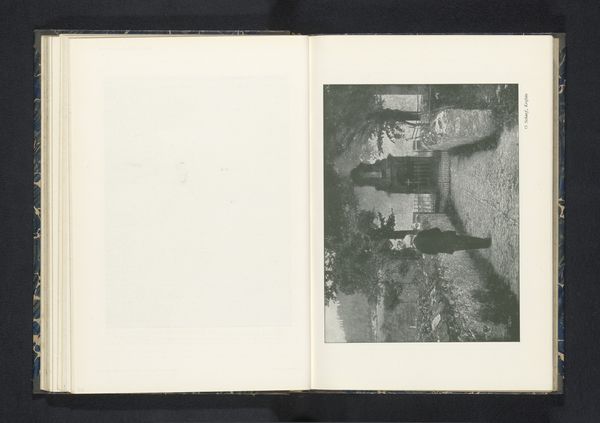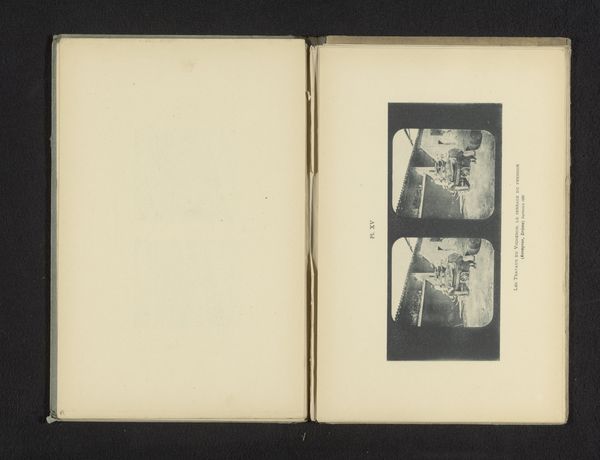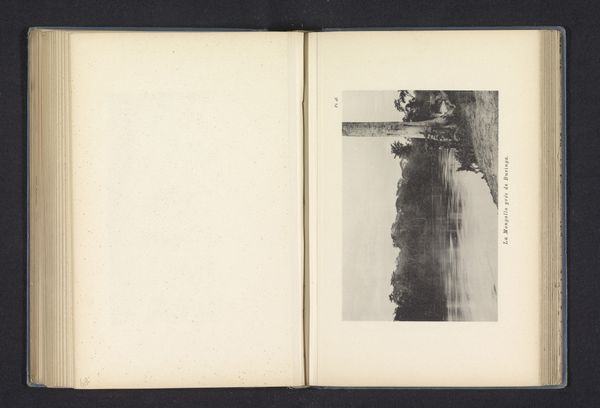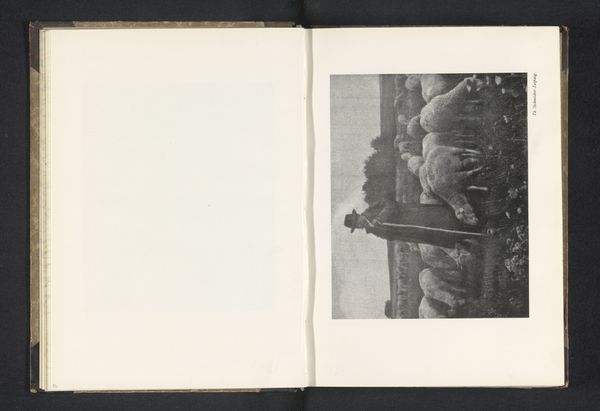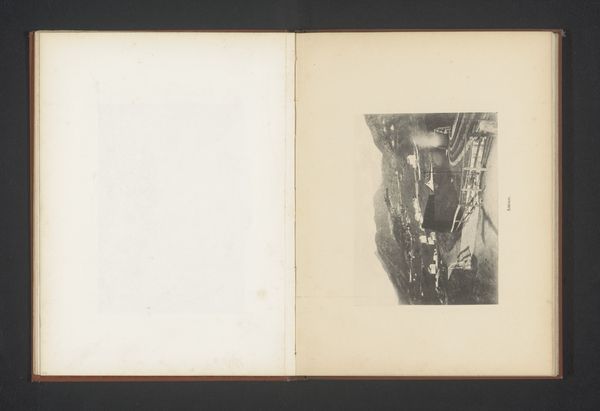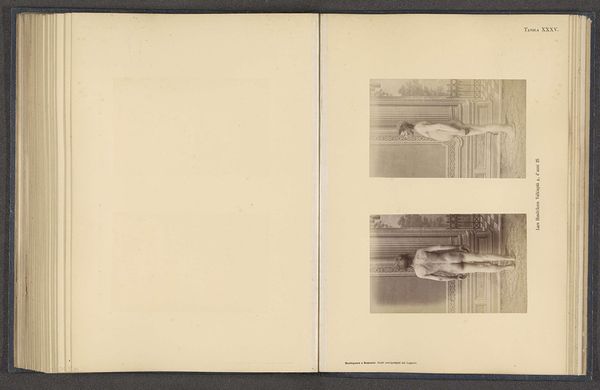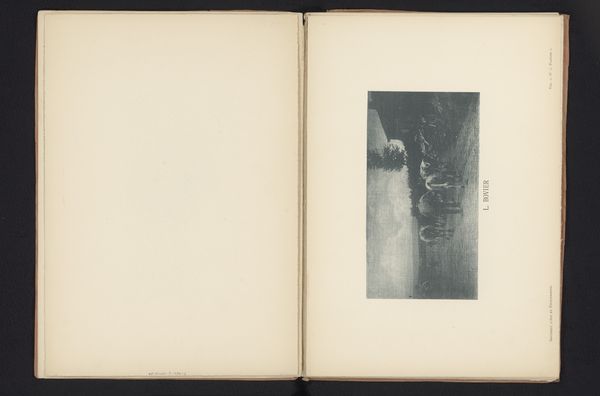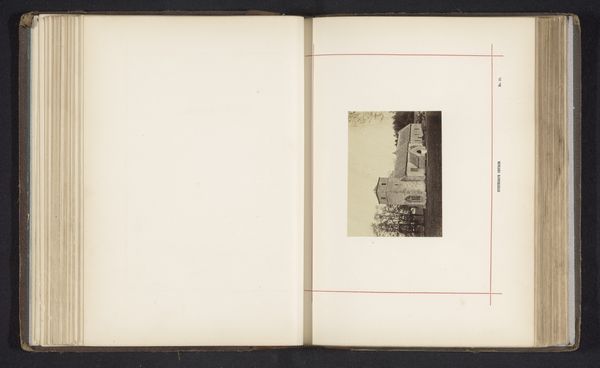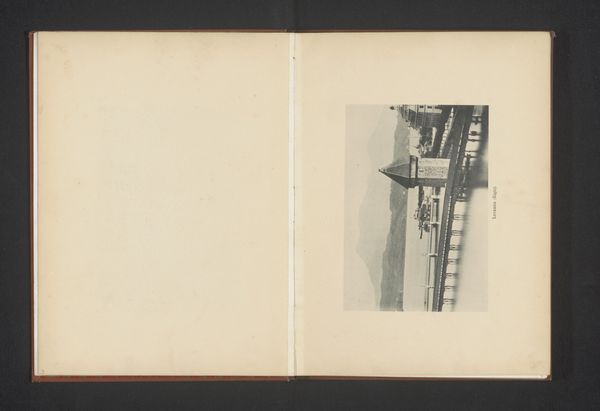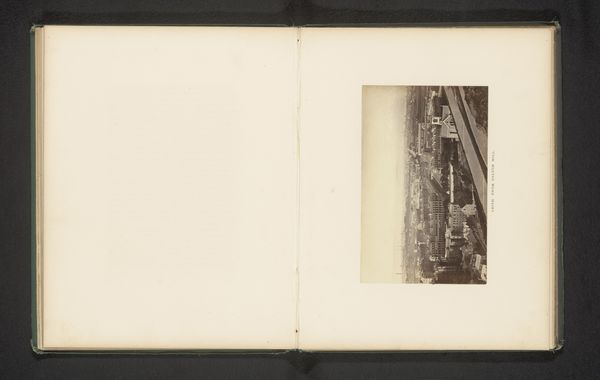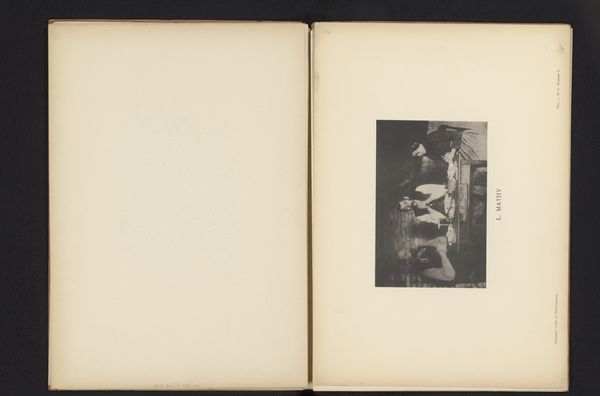
print, photography
#
still-life-photography
#
script typography
# print
#
hand drawn type
#
landscape
#
personal journal design
#
photography
#
personal sketchbook
#
hand-drawn typeface
#
pen-ink sketch
#
thick font
#
pen work
#
sketchbook drawing
#
nude
#
sketchbook art
Dimensions: height 134 mm, width 212 mm
Copyright: Rijks Museum: Open Domain
Editor: Here we have "Zeilschepen in de branding," or "Sailing Ships in the Surf," a print by P. Lecyloë from before 1900. It's a landscape scene captured in what looks like pen work in a sketchbook. The open book format adds a sense of intimacy, like a personal observation. I’m curious to hear your take—what strikes you about this image? Curator: What strikes me immediately is how this simple image encapsulates the romanticism of maritime travel in the 19th century. But also the colonial power it represents. The ships are more than just objects; they symbolize trade routes, resource extraction, and the imposition of Western culture on indigenous populations. This was a period of immense expansion, deeply intertwined with the exploitation of resources and people across the globe. Do you notice anything in the work’s texture or composition that hints to that tension? Editor: I see the way the title and author are typeset almost as an afterthought. They contrast sharply with the rough strokes of the drawing. It’s very stark. Almost like the sketch itself has a voice. Curator: Precisely! And it's unsigned so the meaning comes more from the medium. Consider the artist as someone capturing these fleeting moments for the burgeoning merchant class – visually documenting the tools of their prosperity, which simultaneously served as tools of oppression for others. That romanticism has real implications and ramifications, don't you think? Editor: Absolutely. It makes you consider what is prioritized as memory. I didn’t initially see the connection between maritime imagery and colonial history, but your points really shifted my perspective. Thanks for your insights! Curator: My pleasure. It is crucial to view these works not in isolation but as testaments of history.
Comments
No comments
Be the first to comment and join the conversation on the ultimate creative platform.
